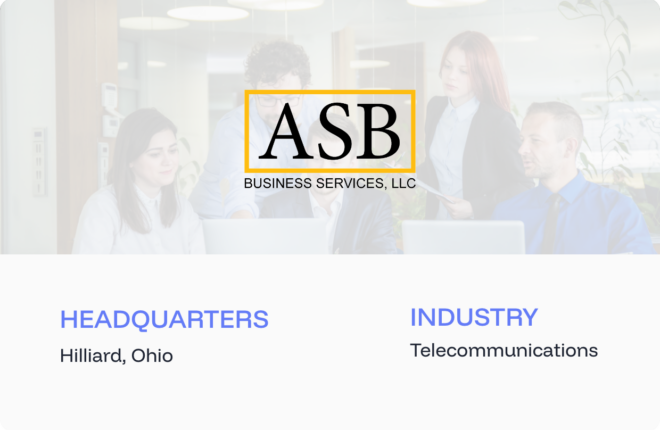In a data-driven digital world, understanding the technology utilized by businesses gives you a distinct competitive advantage. According to Forbes, 70% percent of organizations have already implemented or are actively working on a digital transformation strategy. Their goal is to enhance digital service and solution acceptance.
This creates an opportunity for information security businesses: if the sales teams can identify where organizations have digital transformation programs, they can improve focused marketing efforts and increase total sales. But how do they bridge the gap between possible conversions and practical understanding? Technographic data.
To be successful with the technographic data, understanding and applying technographic data is essential. In this article, we will share ideas for how InfoSec companies can use technographic data in their sales efforts. Let’s start with understanding the technographic data.
What is Technographic Data?
After demographics and firmographics, technographics is the next step in market research development. In the same way that demographics influence people’s actions, technographics influence the software opportunities at a company.
You can learn about the hardware and software used by your prospects. What are their sales and marketing stacks? How are the technologies used in their organization? What gaps do they have in their process? What areas are likely to have friction or security weaknesses?
The more time you spend analyzing data, the clearer the picture of how firms are progressing on their software journey. You can use that information to create lead scores, which will help you determine which businesses are most likely to buy software in the coming months.
Why Do Information Security Businesses Need Technographics?
InfoSec marketers can improve their targeting strategies, offer tailored messaging, outreach, and campaigns with technographic data to boost lead generation and prospecting. Technographics benefit B2B companies in the following ways:
- Determine which accounts require certain tech products/solutions and have the money to invest.
- Optimize marketing messaging depending on target customers’ technology-buying habits.
- Prioritize the sales team’s efforts depending on prospects’ proclivity to purchase a specific technology product.
- Discover new chances by focusing on the clients of your competitors.
- Upsell on third-party technologies that buyers have already purchased.
How is Technographic Data Useful for Information Security Businesses?
Now that we’ve covered the importance of technographics, let’s look at some of the applications of technographic data.
1. Customer Segmentation
B2B marketers gain greatly from technological segmentation. Technographic data can help you construct customer profiles, identify trouble points, and customize marketing initiatives. Regardless of industry, many businesses now rely on their technology stack to fuel growth, competitiveness, customer interactions, and more.
You can categorize or segment your customers based on the sort of software they use. One broad example is if their software is cloud-based or in-house. Companies that use cloud-based software will be increasingly tech-savvy and demand stacks that are flexible and strong. Companies that employ in-house software, on the other hand, signal that they may need to completely overhaul their technology to be more competent and market-ready.
Although these are only assumptions, they are highly useful in better understanding the customers.
2. Account-Based Marketing (ABM)
Account-Based Marketing, or ABM, has emerged as one of the most effective tactics employed by InfoSec and B2B companies overall. ABM enables B2B companies to develop stronger connections with contacts at their target accounts, and technographic data is the driving force behind this strategy.
Better insight into prospects’ technological stack, tools, and even spending capacity can provide precise marketing targeting. If your prospects use marketing automation software such as MailChimp, or Hubspot, it makes a difference. The technological brands they are associated with, how much they are investing in marketing, and more assist in selecting ideal target accounts.
Assume your company creates a platform or an add-on that can be integrated with Salesforce. Salesforce usage is most certainly part of your target criteria. You can also find out if they are using a competitor’s product or service. This data can assist your sales professionals in preparing and tailoring their sales message before meeting with prospects.
3. Personalized Conversation and Messaging
Marketers can optimize the entire inbound marketing funnel and customer journey for lead nurturing and conversion by analyzing technographics data. They can tailor their material to the target clients’ technology stack, making it more relevant.
The path you take your consumers on will be determined by the technical data you’ve gathered. For example, if a customer is not using a specific kind of tech solution, it will be necessary to educate them on the broader benefits of your sector. If a consumer employs a competitor’s product or service, you can demonstrate why your solution is superior.
You may utilize technographics to customize your material to your prospects’ technological stack, making it more relevant to them. You can, for example, discover the channels your prospects utilize, the technological obstacles they may face, and even the things that do not affect them and can be cut from their content.
A marketer can use technographic data to refine the entire inbound marketing funnel to better serve the lead and grab their attention with finely-tuned SEO. Depending on the customer’s technology usage, top, middle, or bottom-funnel material can be promoted.
Taking a 360 Degree Approach is Essential
In InfoSec, harnessing technographic insights provides you a distinct competitive advantage. Technographic data enables marketing and sales teams to design tactical, focused campaigns. You can address real-world concerns confronting firms undertaking digital transformation.
Whether you are looking to increase your sales intelligence or simply understand best practices for customer acquisition, technographic data could be a game-changer for your B2B organization. SalesIntel helps you to do exactly that. You can segment your audience and use a personalized approach with millions of B2B data points and the largest number of direct dials, including mobile numbers.





